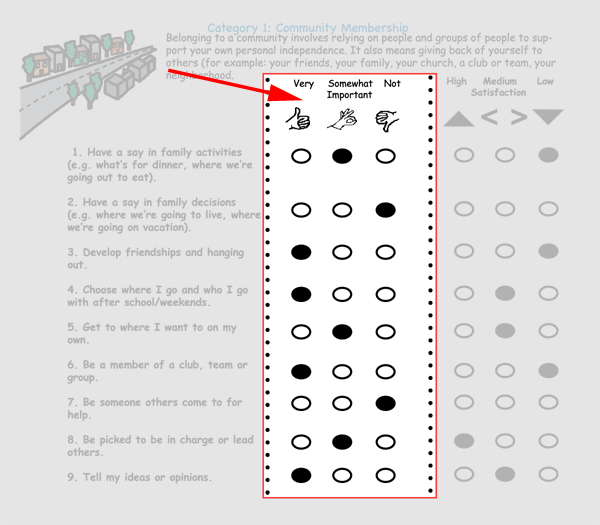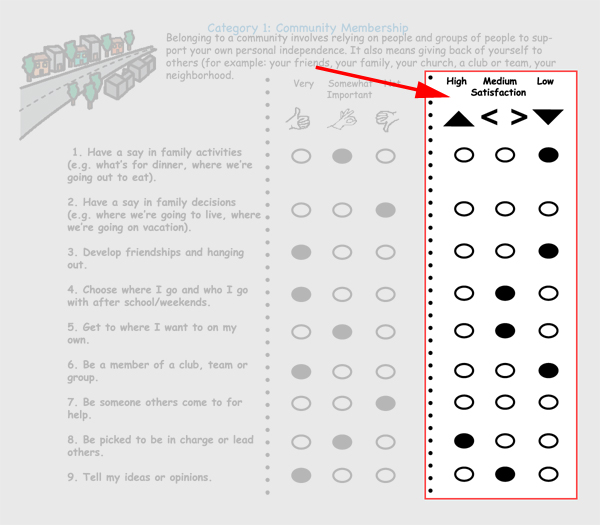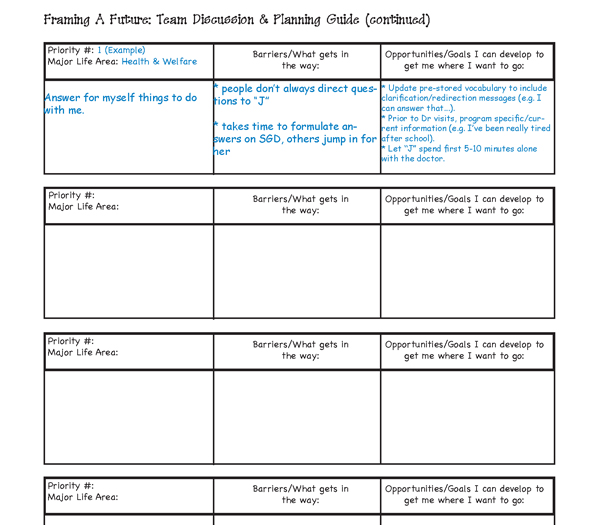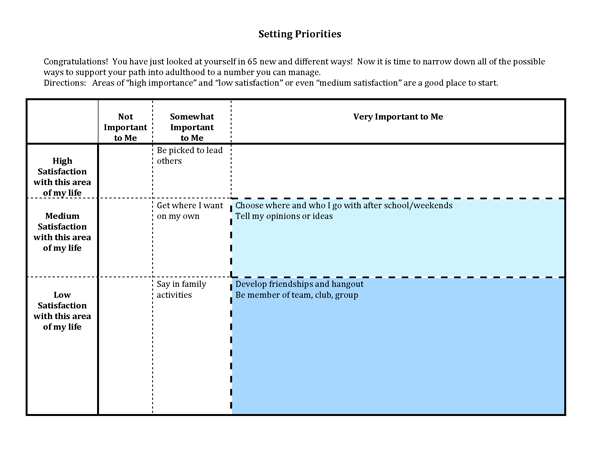FAF is a tool that was developed to help guide the individual, their family and team in looking at the young adult’s priorities in life and assist with the development of appropriate plans for their transition.
FAF is a self-discovery survey of 65 items. The survey is organized around seven major life areas: Community Membership; Control of Personal Health & Welfare; Pursuit of Lifelong Learning; Developing Talents & Interests; Creating Healthy Relationships; Self-Reliance; and Developing a Personal Sense of Spirituality.
Framing A Future (Tool Only) [PDF 452KB]
FAF Modified Survey [276KB, PDF]
Planeando Mi Futuro (Framing A Future Tool Only in Spanish) [PDF 541KB]

The first stage assists the students in determining what is important to them.

The second stage in the process is determining how satisfied the student is with the benchmarks they deemed to be important or very important.

The third stage in the application of the tool is to establish critical priorities in areas in which the student has expressed an interest in developing more skill and confidence.

The fourth stage is determining what steps need to be taken to address these priorities.